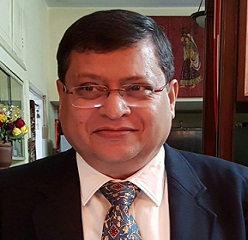Anjan Mukherjee, the founder of Taraltec, noticed that many people in India did not have access to clean drinking water. Handheld pumps in villages do not have the facility to disinfect the water, and poor people often fall victims to water-borne diseases like diarrhoea, cholera, and typhoid. Diarrhoea is the third-most mass killer of infants worldwide, not to mention loss of wages and inadequate medical facilities for effective treatment. It is estimated that by 2025, over 1.4 billion people in 36 countries will have access to water that is likely to contain disease-causing microbes and pathogens. In India, it has been estimated that by 2050, 45% of the population would be short of ‘safe’ water. Access to safe drinking water is a global issue.

The conventional methods to clean water are boiling water, filtration (involves recurring costs), the addition of chemicals (chlorine), Reverse Osmosis (RO), and ultraviolet (UV) treatment. All these solutions require monitoring, management, costs, water wastage, and chemicals that could have carcinogenic properties.
Here are some interesting statistics: In the under-served rural areas with their 6,50,000 villages in India, 85% of the water is sourced from groundwater aquifers grossly contaminated with pollutants; nearly 38 million people are affected annually by water-borne diseases; 1.5 million children die of diarrhoea every year; 73 million working days are lost to water-borne diseases each year; and Rs. 4000 crores ($600 million) is the estimated economic cost per year. According to the WHO and UNICEF Joint Monitoring Programme Report of 2015, 663 million people, 1 in 10 worldwide, lack access to safe water. Despite an estimated total of Rs. 1,105 billion spent since 1951, there still is a lack of safe and secure drinking water.
Anjan created an invention that was based on bio-mimicry backed by principles of physics. In nature, a snapping shrimp (Alpheidae) attacks its prey by shooting a jet of water by snapping its claw, causing cavitation bubbles to form as the ambient pressure goes below the vapour pressure. On recovery of the ambient pressure, this bubble implodes with an intense localised energy release. For a tiny fraction of a second, temperatures in the bubble soar to more than 4,426oC (8,000oF). The popping also creates a flash of light, which lasts for a billionth of a second. The Taraltec device converts the fluid’s kinetic energy into millions of targeted microbubbles, each acting as a localised reactor. This is packed with extreme heat, pressure, and turbulence that release intense energy packets during the bubbles’ collapse. The resultant shock waves physically kill microbes and deliver the water to those drawing it up, resulting in 99+% safer water than earlier.
Anjan developed a device called the Taraltec Reactor for water disinfection that kills microbes in water from bore well hand pumps, thus eliminating water-borne diseases such as diarrhoea, cholera, and typhoid. It can be easily retrofitted into a hand pump, such as the India mark 2 model (the most widely used hand pump in the world), within an hour by even a local plumber with no special tools, by just sliding the reactor into the hand pump. It has nil operating costs, low capital expenditure, no maintenance or consumables, no fuel or electricity, no specialised personnel required for installation, and no behavioural change in usage.
The target customers are the government, corporates through their Corporate social responsibilities (CSRs), and High Net-worth Individuals (HNIs) who want to contribute to this important cause. This breakthrough product had to be imagined, and it is highly unlikely that any customer would have even dreamt of such a solution! This invention met the need for safe drinking water in a much more effective way than existing solutions.
Another venture that has been impacting the lives of people in remote villages is Gram Oorja, a social enterprise that has been providing renewable energy solutions to far-flung communities in India.
URL of Taraltec: https://taraltec.com/





